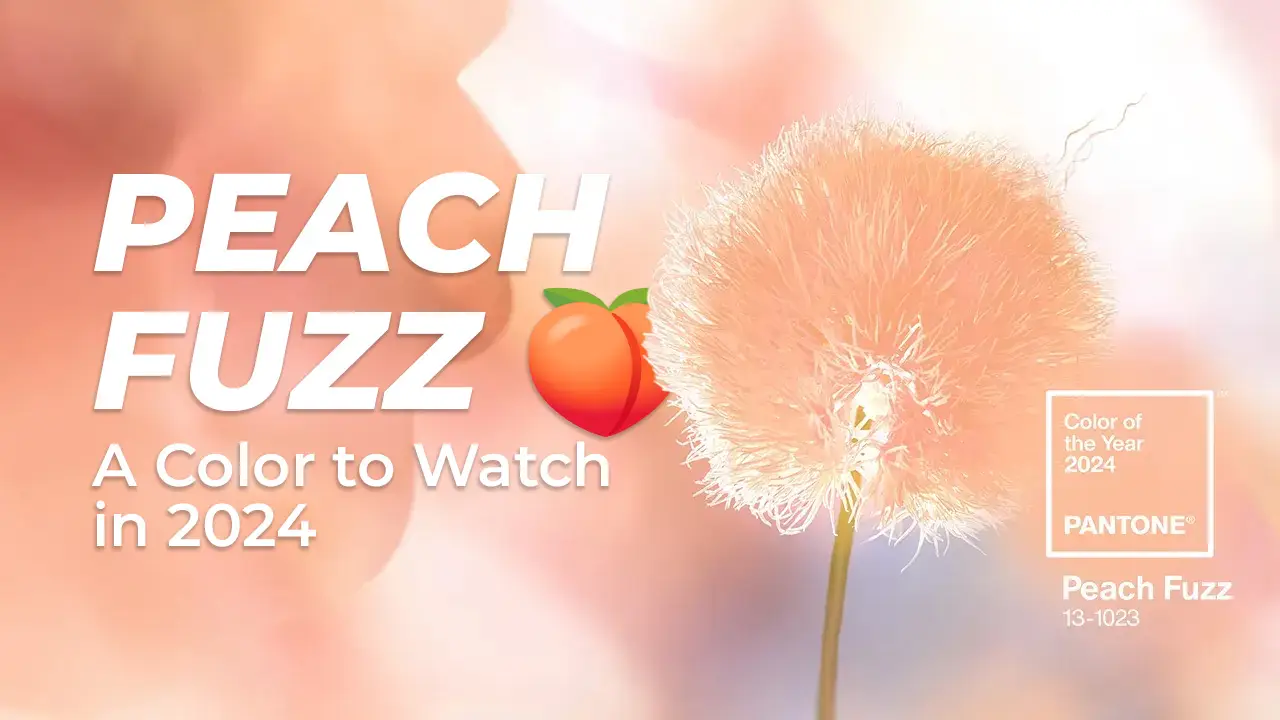Every year, the Pantone Color Institute unveils a color that sets the trend for various industries. For 2024, “Peach Fuzz” has been announced as the Color of the Year. This choice is more than just a prediction; it’s a directional beacon that influences fashion, product design, digital media, and even consumer behavior. Understanding this trend is crucial for brands looking to stay relevant and competitive.
The Significance of “Peach Fuzz” for 2024
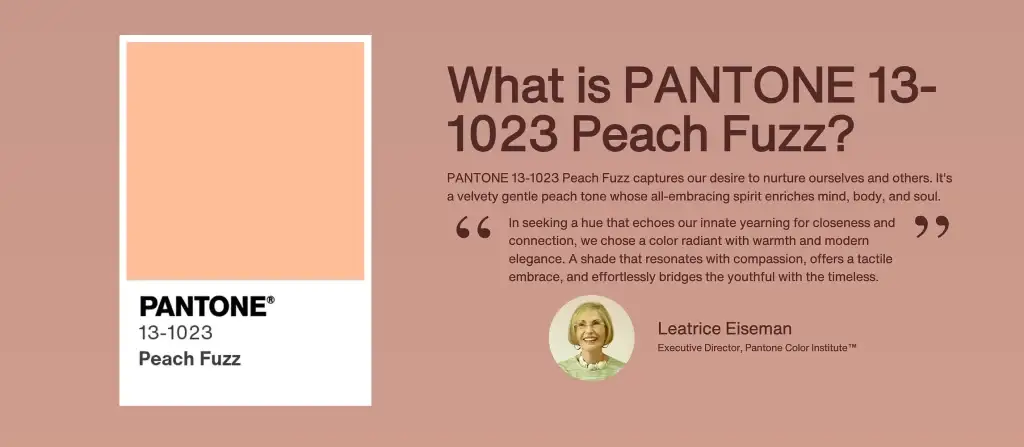
“Peach Fuzz” is more than just a color; it’s a statement. It’s a reflection of the collective consciousness, a response to the world’s current state, and a predictor of the aesthetic and emotional trends of the coming year. The selection of this particular shade—a warm, comforting, yet vibrant color—signals a shift towards optimism and positivity in a world that is constantly evolving and facing new challenges.
This color choice is not arbitrary. It’s the result of meticulous trend analysis by Pantone, which considers a wide range of factors, from fashion trends and art movements to socio-political climates and technological innovations. By choosing “Peach Fuzz,” Pantone is not just predicting a trend; it’s influencing the direction of design and consumer preferences for the entire year.
Impact on Various Industries
The influence of Pantone’s Color of the Year extends far beyond the fashion runways and design studios. It permeates various facets of our lives, from the clothes we wear to the products we use, the media we consume, and even the spaces we inhabit.
- Fashion Industry: In the world of fashion, “Peach Fuzz” will likely dominate the scene, from haute couture to streetwear. Designers will incorporate this hue into their collections, offering a fresh palette that resonates with the contemporary consumer’s desire for warmth and comfort.
- Marketing and Branding: For marketers and brand strategists, “Peach Fuzz” presents an opportunity to tap into a color that is already primed to capture the public’s attention. Brands can leverage this color to create visually appealing campaigns, product packaging, and advertising strategies that speak directly to the prevailing mood of consumers.
- Product Design: The choice of “Peach Fuzz” will also influence product design across various sectors, including technology, home decor, and consumer goods. This color can offer a unique aesthetic appeal, making products stand out in a competitive market.
- Digital Design: In the digital realm, from web design to mobile apps, “Peach Fuzz” can provide a fresh and modern look that aligns with current trends, enhancing user engagement and experience.
Understanding Pantone’s Influence

The Pantone Color of the Year (COTY) isn’t just a shade; it’s a reflection of the global zeitgeist, distilled into a single color that sets the tone for various industries and influences consumer behavior. The process of selecting this color is a meticulous and comprehensive journey through multiple domains of culture, fashion, technology, and more.
Global Inspiration: The Foundation of Color Trends
- Art and Design: Pantone’s experts explore the world of art and design, looking for emerging color patterns. This includes attending international art exhibitions, analyzing the work of up-and-coming artists, and keeping a pulse on design trends. The colors that dominate these spaces often signal broader shifts in aesthetic preferences.
- Fashion: The runways of the fashion world, from Paris to Milan, are critical indicators of color trends. Pantone analysts scrutinize collections from haute couture to streetwear, noting the colors that designers are gravitating towards, as these often set the trend for the coming seasons.
- Film and Entertainment: The color palettes of upcoming movies, popular TV shows, and even video games are carefully examined. The visual storytelling in entertainment can profoundly influence color trends, shaping consumer expectations and preferences.
- Travel and Lifestyle: The aspirational qualities of travel destinations, coupled with evolving socio-economic conditions and lifestyle trends, also inform Pantone’s color selection. These factors often reflect broader societal shifts and consumer sentiments.
Trend Research: The Process of Color Discovery
- New Technologies and Materials: Advancements in technology and the introduction of new materials can significantly impact color choices across industries. Pantone stays ahead by monitoring these developments, understanding how they might alter color perceptions and applications.
- Social Media Influence: With platforms like Instagram and TikTok setting trends at an unprecedented pace, Pantone’s team keeps a close eye on color trends that gain traction on these platforms, recognizing their potential to influence wider market trends.
- Sporting Events: Major sporting events often create temporary, yet impactful, color trends. Pantone considers the influence of events like the Olympics or FIFA World Cup, recognizing their capacity to sway color preferences on a global scale.
Analysis and Selection: The Art of Choosing the Color
- Global Team of Experts: Pantone’s Color Institute employs a diverse team of experts who engage in regular discussions and analyses throughout the year. This team’s diverse perspectives ensure a well-rounded and globally relevant color choice.
- Open-ended Discussions: The selection process goes beyond identifying popular colors; it’s about understanding their emotional resonance, cultural significance, and future potential. These discussions are open-ended, focusing on the story and message behind each emerging color.
- No Commercial Agendas: Pantone maintains a commitment to a pure approach in its selection process, ensuring that personal biases or commercial interests do not influence the final decision.
Outcome: Setting the Global Color Agenda
- Single Representative Shade: After extensive research and discussion, a single color is chosen to encapsulate the mood and spirit of the upcoming year. This color then becomes a beacon for designers, marketers, and brands worldwide.
- Trend Forecasting Tool: Pantone’s COTY is more than just a color recommendation; it’s a crucial trend forecasting tool that guides design, fashion, and other industries in planning their color strategies.
- Global Influence: The impact of Pantone’s COTY extends far beyond aesthetics. It influences product development, marketing campaigns, and even consumer behavior, making it a pivotal element in the global design and branding landscape.
Beyond the Color – Differentiation in a Monochromatic World
Color is a silent ambassador of brand identity. It can encapsulate a brand’s essence and communicate its values without a single word. The psychological impact of color on consumer perception is profound. For instance, the previous year’s Pantone color, Viva Magenta, was not just a color but a statement that resonated with boldness and vibrancy. It was seen in over 65% of new product launches across diverse industries, a testament to its widespread appeal and influence.
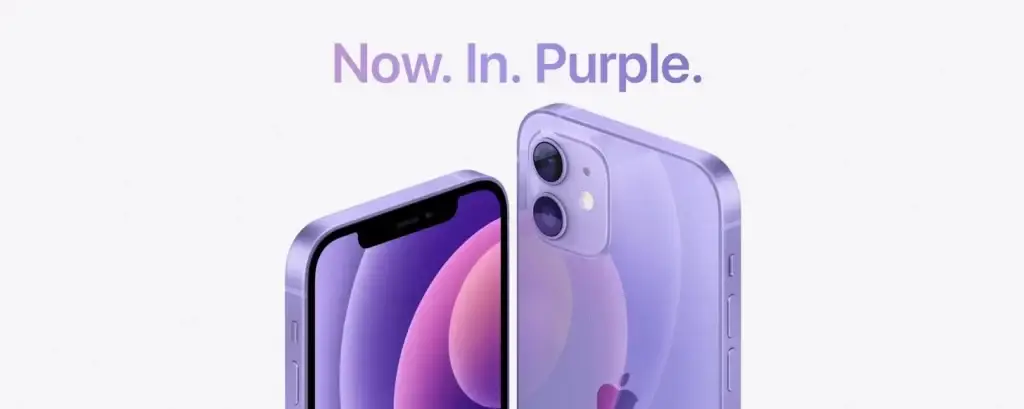
Standing Out in a Color-Dominated Market
While adopting the Pantone Color of the Year can ensure relevance, it also presents a challenge: differentiation. When a color like Viva Magenta becomes ubiquitous – featured in over 40 major fashion shows and generating over 5 billion social media impressions with the hashtag #VivaMagenta – brands face the risk of blending into a monochromatic landscape.
Creative Execution: Strategies for Distinctiveness
To stand out, brands must think beyond just color adoption. Creative execution is key. Consider contrasting color schemes or complementary palettes that enhance the primary color without overshadowing it. Innovative design approaches that blend “Peach Fuzz” with unique textures or patterns can also create a distinctive aesthetic.
Data-Driven Decisions: The Role of Analytics in Color Strategy
Using data and market analysis is crucial in deciding how to implement “Peach Fuzz.” For instance, the 25% increase in searches for “Viva Magenta” home decor inspiration on platforms like Pinterest last year indicates a consumer lean towards vibrant interiors. Such insights can guide brands in tailoring their use of “Peach Fuzz” to align with consumer preferences and market trends.
Practical Application of ‘Peach Fuzz’ in Various Industries
Here’s how the world is already adapting Peach Fuzz. Everyone is throwing their hat in the ring.
Makeup and Fashion: Infusing ‘Peach Fuzz’ into Style
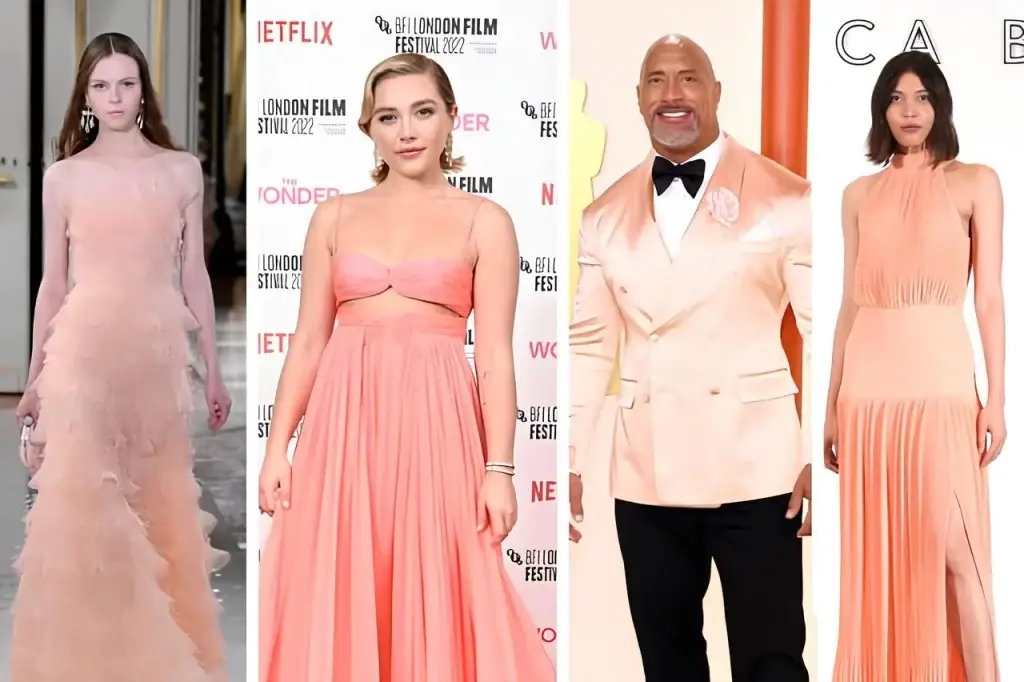
“Peach Fuzz” offers a fresh and vibrant palette for the makeup and fashion industry. Makeup brands can create entire lines featuring this color, from peach-toned blushes and eyeshadows to lipsticks that add a warm, lively touch to any look. In fashion, designers can incorporate “Peach Fuzz” in their collections through dresses, accessories, or as part of a color-blocking trend, blending it with complementary or contrasting hues to make a statement on the runway.
Sports and Merchandise: Limited Edition Concepts
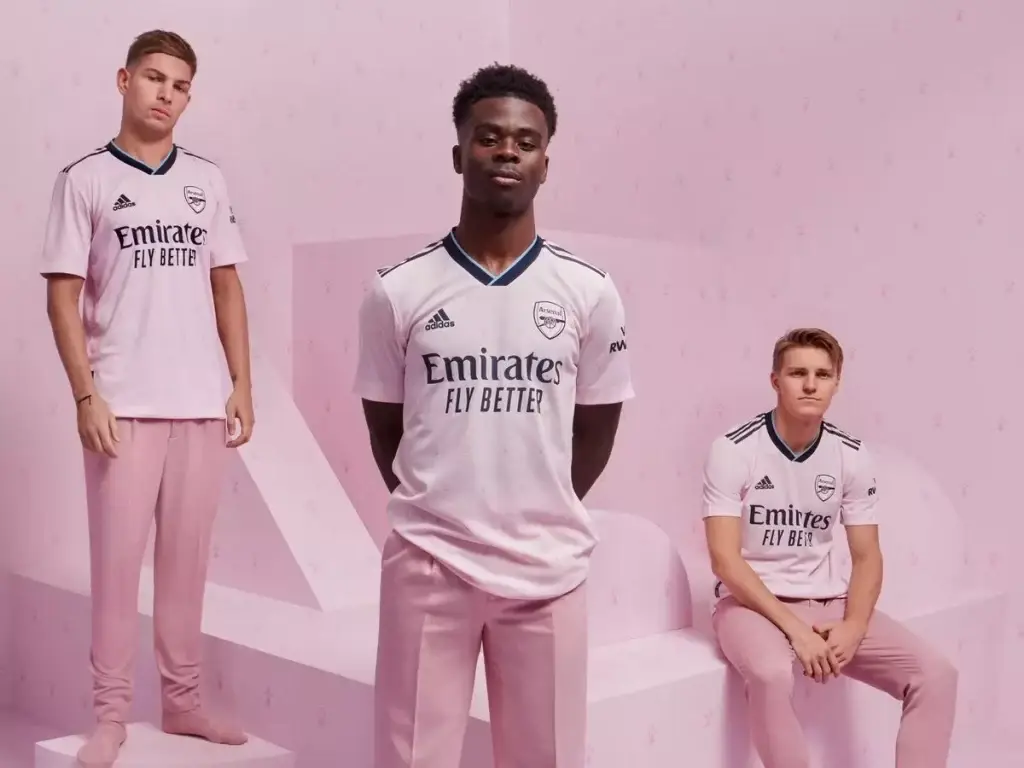
In the world of sports and merchandise, “Peach Fuzz” can be a game-changer. Imagine a line of Nike Air Jordans released in a limited edition “Peach Fuzz” colorway. Not only would it tap into the trend, but it would also offer something unique for sneaker enthusiasts. Similarly, sports teams could introduce special edition merchandise in “Peach Fuzz,” catering to fans looking for trendy and exclusive memorabilia.
Digital Design: Refreshing Templates and Interfaces
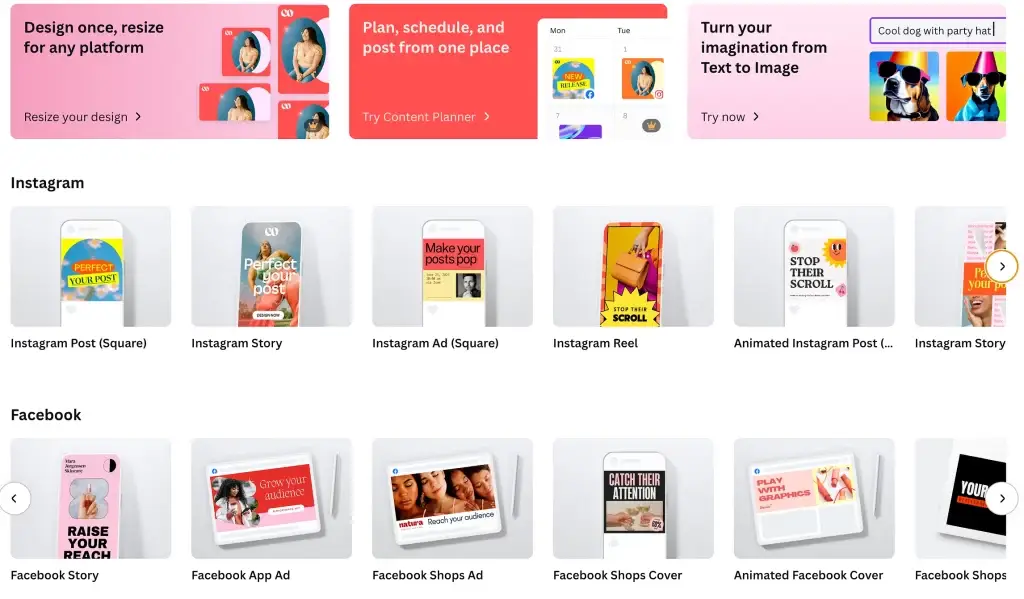
Digital platforms like Canva can integrate “Peach Fuzz” into their design templates, offering users the latest color trends for their creations. This can range from social media graphics to presentation templates, keeping designs fresh and in vogue. In UX/UI design, “Peach Fuzz” can be used to add a modern and inviting feel to interfaces, potentially enhancing user engagement and experience.
Interior Design: Revitalizing Spaces with ‘Peach Fuzz’
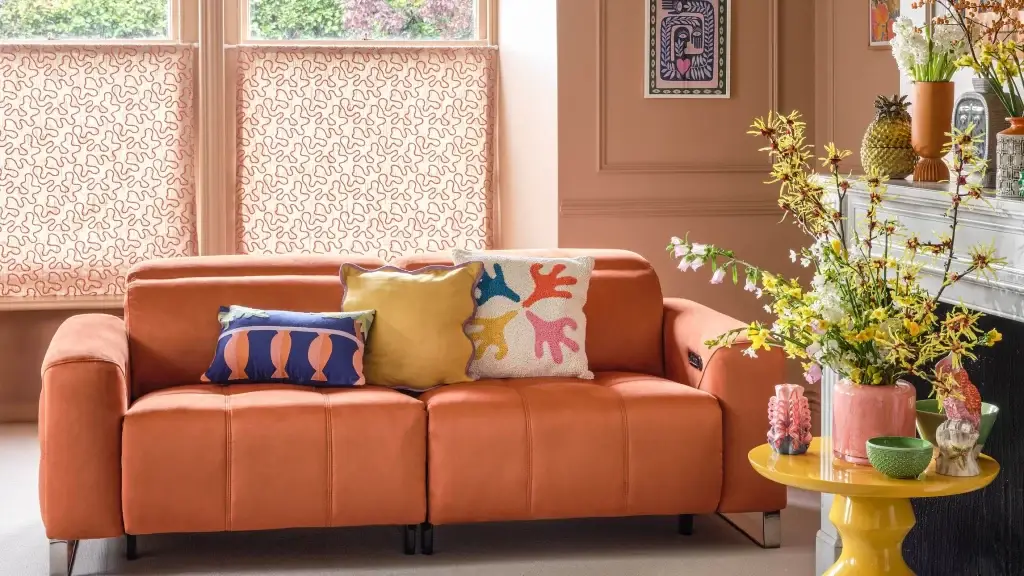
In interior design, “Peach Fuzz” can breathe new life into spaces. Its warm and inviting hue makes it perfect for accent walls, textiles, or decorative accessories, creating interiors that feel contemporary and cozy. This color can be particularly effective in living spaces and bedrooms, where it can create a serene yet uplifting atmosphere.
SaaS Industry: Enhancing User Experience
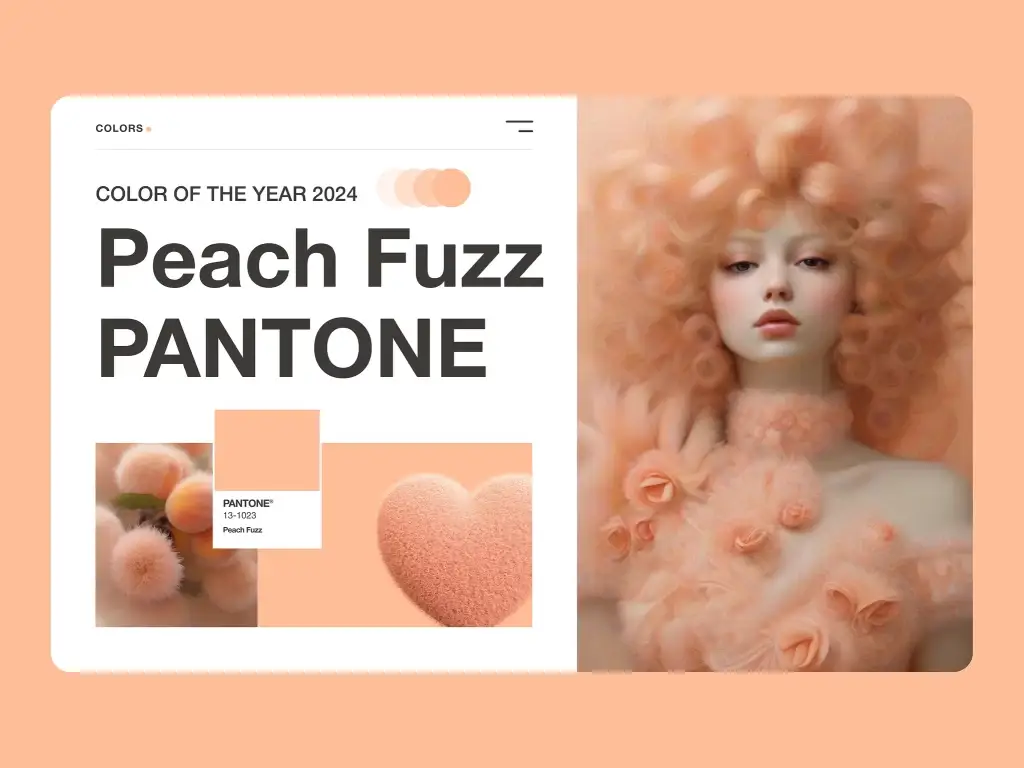
For SaaS (Software as a Service) companies, “Peach Fuzz” can be used to refresh the visual appeal of their platforms. Subtle incorporations in the interface, such as on dashboards, buttons, or highlights, can make the software feel more current and user-friendly. It can also be used in marketing materials to convey a sense of innovation and alignment with current trends.
UX/UI Design: A Touch of Modernity
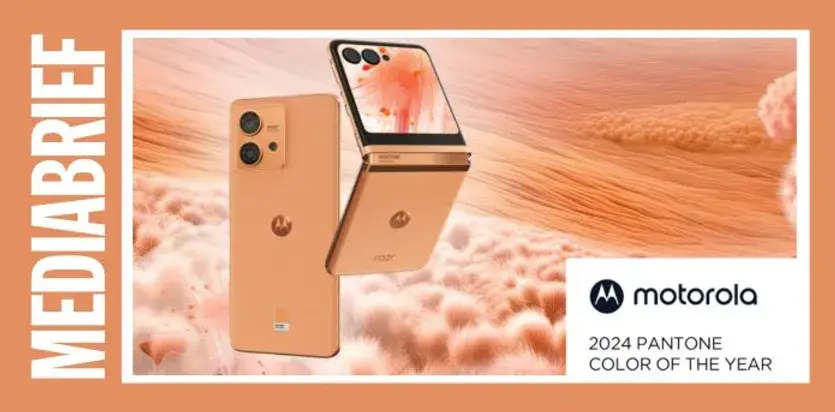
In UX/UI design, “Peach Fuzz” can be utilized to add a touch of warmth and modernity to digital interfaces. Whether it’s for mobile apps, websites, or software interfaces, this color can be used for call-to-action buttons, navigation bars, or as part of the overall color scheme to create an interface that’s not only functional but also visually appealing and on-trend.
Crafting a ‘Peach Fuzz’ Strategy for Your Brand
Integrating ‘Peach Fuzz’ into Your Brand Strategy is essential. But we’ll help you through it.
- Brand Identity Review: Start by evaluating your brand’s current identity. How does “Peach Fuzz” align with your brand’s values, tone, and aesthetic? Consider the emotional resonance of the color and how it might enhance or contrast with your existing brand palette.
- Target Audience Analysis: Understand your audience’s response to color trends. Does your target demographic gravitate towards trend-driven designs, or do they prefer classic styles? This understanding will guide how prominently “Peach Fuzz” should feature in your brand strategy.
- Competitive Landscape: Assess how your competitors are responding to the color trend. This can provide insights into market saturation and opportunities for differentiation.
- Feasibility and Scope: Determine the practicality of incorporating “Peach Fuzz” into your products or marketing materials. This involves considering factors like production capabilities, budget constraints, and timelines.
Creative Tips for Adopting ‘Peach Fuzz’
- Product Line Adaptation: If you’re in a product-based industry, consider a limited-edition line featuring “Peach Fuzz.” This could range from packaging redesigns to introducing new products that highlight the color.
- Marketing and Advertising: Use “Peach Fuzz” in your marketing campaigns to create a contemporary and relevant feel. This can be particularly effective in visual mediums like social media, where the color can make your content stand out.
- Digital Presence: Refresh your website and digital platforms with “Peach Fuzz” accents. This can be as subtle as updating button colors or as bold as a full background or banner update.
- Interior Branding: If your brand has physical spaces (like stores or offices), incorporating “Peach Fuzz” in the interior design can create a cohesive and immersive brand experience.
- Collaborations and Partnerships: Consider collaborations with artists, designers, or other brands to create unique “Peach Fuzz” themed products or campaigns. This not only taps into the trend but also expands your brand’s reach.
- Storytelling and Content Creation: Utilize “Peach Fuzz” in your storytelling. Create content that explains why and how your brand is using this color, potentially connecting it with broader themes of warmth, comfort, and optimism.
- Feedback and Adaptation: After implementing “Peach Fuzz,” gather feedback from your audience. Use this data to refine your approach, ensuring that your brand remains dynamic and responsive to consumer preferences.
The Future is Bright, and It’s Peach Fuzz
As we wrap up our exploration of Pantone’s Color of the Year, “Peach Fuzz,” it’s clear that this vibrant and warm hue is set to leave a significant mark on the landscape of design, fashion, and branding. The future indeed looks bright.
The Ubiquity of “Peach Fuzz”
In the coming months, expect to see “Peach Fuzz” permeating various aspects of consumer products and brand experiences. This color will likely become a familiar sight, from fashion runways to tech gadgets, home decor to marketing campaigns. It’s not just a trend; it’s a movement that encapsulates the mood of the times – one of optimism, warmth, and a touch of playfulness.
The Ripple Effect Across Industries
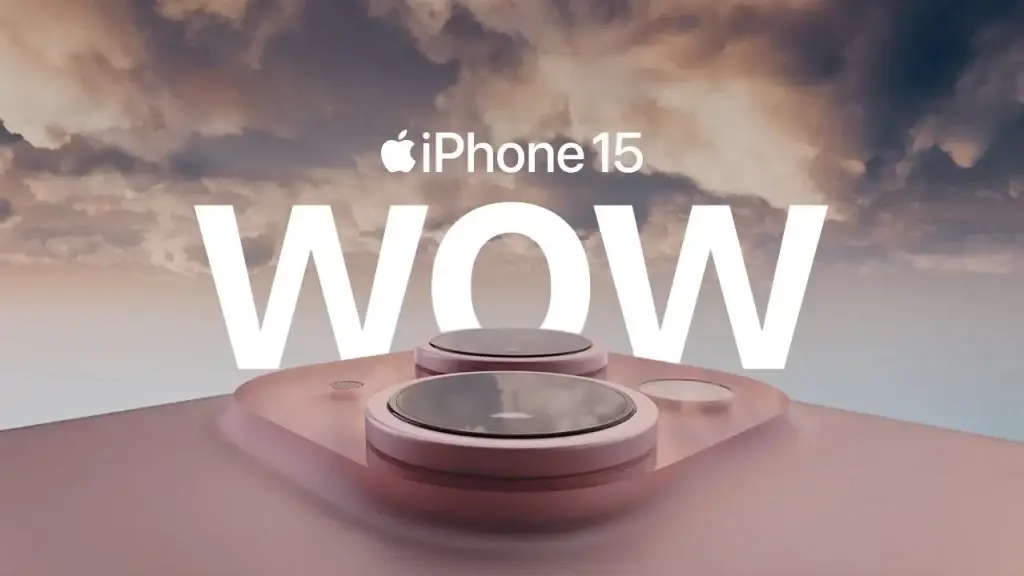
- Technology and Gadgets: Imagine the buzz when a brand like Apple introduces a new iPhone in a sleek “Peach Fuzz” finish. It’s a move that would not only be trendsetting but also reflective of a brand staying ahead of the curve and appealing to consumer aesthetics and emotions.
- Fashion Statements: “Peach Fuzz” will likely dominate fashion, with sneakers and sweaters in this hue becoming must-have items for trendsetters. The color adds a fresh and lively touch to apparel, making it a popular choice for both casual and high-fashion pieces.
- Branding and Marketing: Brands across various sectors will incorporate “Peach Fuzz” in their visual identity and marketing materials. This strategic move can enhance brand appeal, making it more relevant and visually engaging for the contemporary consumer.
Embracing the Trend: A Strategic Move
Adopting “Peach Fuzz” in your products and branding isn’t just about jumping on the bandwagon; it’s a calculated decision that demonstrates market awareness and a connection with the current cultural pulse. It reflects a brand’s ability to adapt, innovate, and resonate with its audience.
While embracing “Peach Fuzz” is a forward-thinking move, it should be grounded in data and market analysis. Understanding how this color aligns with your brand identity, audience preferences, and industry trends is key to leveraging its potential effectively.
As “Peach Fuzz” begins its reign in 2024, brands and designers have the opportunity to harness its potential to create products and experiences that are not only aesthetically pleasing but also emotionally resonant. It’s a color that promises to bring a fresh perspective and vibrancy to the market, making the future indeed bright, and unmistakably “Peach Fuzz.”
